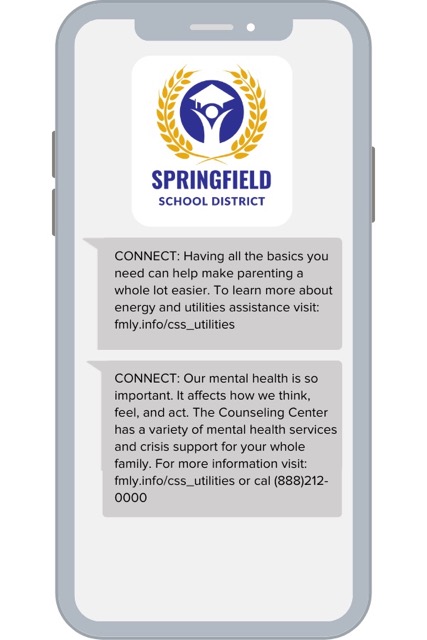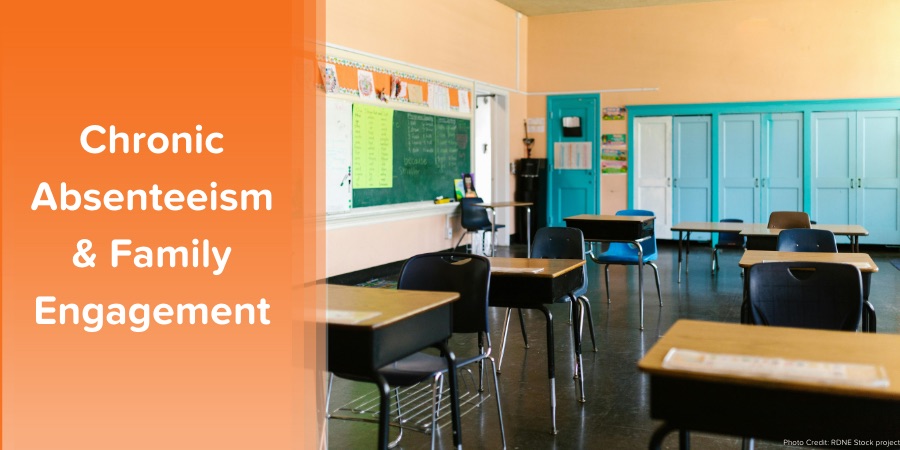By Megan Okrand, contributing writer
As a former educator, my weeks were punctuated by professional development sessions (PDs) aimed at enhancing our teaching toolkit. Topics varied from crafting engaging lesson plans to fostering meaningful student-teacher relationships to tailoring instruction to meet diverse learner needs. These PDs were driven by a genuine desire to uplift every student within the classroom walls.
Yet, despite these well-intentioned efforts, we often encountered a major hurdle to student success: attendance. No matter how innovative or engaging our teaching methods, they fell short without students present to benefit from them.
As educators, we may ourselves grappling with a puzzle that professional development sessions alone cannot solve. The reality of this situation underlines a critical challenge that extends beyond the individual efforts of teachers. The ripple effects of chronic absenteeism extend far beyond missed assignments and gaps in knowledge. They touch on aspects of social development, self-esteem, and future opportunities.
This knowledge paves the way for a deeper dive into how the ripple effects of chronic absenteeism impact student learning, and how we can tackle them together. It’s a clear sign that the answers we’re looking for aren’t just tucked away in our classrooms—they’re spread out across the entire school community.
Understanding and addressing chronic absenteeism
According to Attendance Works, chronic absenteeism is defined as missing 10% or more of the school year for any reason, including both excused absences and unexcused absences. This measurement offers a broader understanding of student attendance issues, moving beyond the traditional focus on truancy (which only considers unexcused absences).
Why this shift? Because using chronic absenteeism as a metric underscores the importance of every school day in a student’s academic success and overall student success. This shift acknowledges that absence rates affect learning outcomes, regardless of the reasons behind them.
Chronic absenteeism has been a growing concern, with rates doubling in some areas between the 2018-19 and 2021-22 school years according to FutureEd. There are glimmers of hope, however. Data from the 2022–23 school year shows that about two dozen states reported decreases in absenteeism. While rates remain high compared to pre-pandemic levels, this suggests a gradual, yet challenging, path toward recovery in student attendance nationwide.
Ultimately, understanding chronic absenteeism means recognizing that it isn’t just about missing days; it’s about missing critical moments that nurture student growth. Every day in school holds lessons and interactions that shape a student’s development. When they’re absent, they miss these building blocks.
This deeper understanding paves the way for targeted initiatives aimed at keeping students in school and on track.
Behind the absences: a closer look at the causes
Tackling chronic absenteeism requires understanding the why behind the missed days. Students deal with a lot that makes showing up tough. By listening to their struggles, educators can move beyond numbers and create solutions that address their realities, not just attendance records.
Navigating Life’s Hurdles: Life’s unpredictability places numerous obstacles in the path to consistent school attendance. Illness can upend a student’s daily routine, and transportation woes can make the journey to school feel like an epic quest. Meanwhile, unstable housing and food insecurity can cast long shadows, making education seem less of a priority.

Finding a Sense of Safety and Belonging: For some students, school is a battleground of academic challenges and social challenges, where anxiety and bullying loom large. These emotional barriers are as formidable as any physical obstacle, often leading to a deep-seated aversion to school.
The Search For Meaning: The challenge of keeping students engaged goes beyond curriculum design. When the learning environment lacks culturally responsive instruction and the presence of meaningful adult connections, students’ mental health can suffer, leading to feelings of insignificance and disconnection. This sense of alienation can make students feel as though their presence in school doesn’t matter, prompting absences.
Misunderstandings About Attendance: Common misconceptions can significantly undermine attendance efforts. The belief that only unexcused absences matter, or that missing a couple of days a month is harmless, can lead to a slippery slope. Recognizing the cumulative effect of missing just two days of school per month can help everyone in the school community understand the importance of consistent attendance.
The impact of absenteeism on student success
Though the reasons behind chronic absences may vary, their outcomes converge to significantly impact students’ futures, highlighting the critical need for early and effective intervention.
Future academic achievement
Chronic absenteeism does more than just keep kids from learning today; it jeopardizes their future academic achievements as well. Missing too many days leads to sharp declines in math and declines in reading, key areas that affect overall performance. Being chronically absent doesn’t just leave gaps in learning; it sets up a barrier to what comes next.
Those early years—preschool, kindergarten, and first grade—are golden. They lay the groundwork for all the learning that follows. Studies show that elementary school students who miss out a lot during these formative years often find themselves in a tight spot with reading by the time third grade rolls around.
This is where the plot thickens, especially in math and reading. Skipping school at this stage is like missing the start of a movie. Before you know it, you’re scrambling to catch up, but the storyline keeps moving ahead. These early slips can quickly turn into a desperate race to stay on track, pulling down performance in every subject.
And the stakes are high: falling behind in reading by the end of third grade signals potential trouble ahead. Students facing this challenge are more likely to drop out of high school than their peers who read proficiently.

For actionable insights on addressing this crucial issue, check out our recent blog posts exploring the critical components to literacy development!
The ripple effect on learning
Research reveals that even a few students’ frequent absences can substantially impede the academic progress of the whole class. It’s a domino effect – one absence can lead to another missed concept, which can make it harder to understand the next thing, and so on.
Teachers end up juggling to keep everyone on track, which might mean those extra-special projects or deep dives into advanced topics have to be shelved. It’s a tough balancing act, making sure no one’s left behind while trying to keep the learning adventure exciting for everyone. And it affects not just one student, but how the whole class moves forward together, or sometimes, doesn’t.
Beyond the books
Chronic absenteeism goes deeper than messing with the books, touching on something a lot more personal and complex—how students feel and interact. Imagine missing out on those everyday, seemingly small moments in school that, believe it or not, play a big part in learning how to navigate social circles, build self-confidence, and find that inner drive.
When kids are absent frequently, they miss out on these invaluable interactions, leading to feelings of being on the outside looking in, struggling with loneliness, and not quite getting the hang of social cues. The more isolated and disconnected students feel, the less they want to show up, trapping them in a cycle that’s tough to escape.
This blend of feeling socially awkward and seeing themselves in a not-so-great light can make students’ academic and social hurdles even harder to jump over.
The long haul
Missing too many school days might not seem like a big deal at the moment, but its consequences can profoundly shape futures in ways that extend far beyond missed algebra equations or history lessons.
One of the most direct consequences of chronic absenteeism is an increased likelihood of dropping out of high school, and skipping the cap and gown ceremony comes at a cost. High school dropouts face a steep climb in the job market, with earnings that lag significantly behind their diploma-holding peers.

It’s not just about the paycheck; it’s about what those paychecks can—or can’t—provide.
Education and health go hand in hand. Miss out on the former, and the latter could take a hit. Without a diploma, people are more likely to face health complications later in life. Lack of education limits access to health information, resources for healthy living, and health care services, leading to a higher incidence of chronic conditions and a lower life expectancy.
Moreover, the fallout from dropping out can ripple into the criminal justice system. The path from the classroom to the courtroom far too traveled. This connection underscores a broader issue: the path from school to legal challenges is influenced not just by personal circumstances but by broader systemic injustices that limit economic opportunities and shape behavior.
Empowering families to improve attendance
Health issues, family concerns, and even a student’s zip code can play huge parts in whether they hit the books or miss the bus. Tackling chronic absenteeism is a collaborative effort that requires insight and action from educators, families, and communities.
Here at ParentPowered, we’re huge believers in the magic of family engagement (and it doesn’t hurt that the research backs our beliefs up!). Let’s face it: when families and schools work together in a trusting environment, students of all ages are more likely to attend school regularly and be prepared to learn.
Build a strong support system
Collaboration is key in tackling chronic absenteeism. Strong partnerships between schools and families are essential in building a support system for every student.
School programs like attendance teams and intervention specialists work directly with families to address challenges that might keep a student from school, whether it’s unreliable transportation or difficulties faced by students from disadvantaged communities.
Community involvement plays a vital role too. After-school programs and meal initiatives not only provide practical support but also foster a sense of belonging for students. When school feels like a welcoming and supportive environment, attending regularly becomes a natural process.
ParentPowered’s family engagement approach
At ParentPowered, we address chronic absenteeism head-on, and we know families are a key part of the solution! We help parents become active partners in their child’s education, equipping them with the tools and knowledge they need to overcome challenges that might keep their kids from school.
Here are just a few ways that ParentPowered helps families.
Meeting Basic Needs
ParentPowered understands that before a child can focus on getting to school, there are basic needs that must be met—food, shelter, safety, and nurturing relationships. Facing challenges like housing insecurity can make regular attendance a difficult goal for many students, leaving educators searching for ways to help.
This is where ParentPowered steps in, especially with our Community Support Stream feature within the Trauma-Informed family engagement program. This innovative tool empowers educators to directly link families with local and national resources such as food banks, libraries, and healthcare clinics through curated text messages.

By addressing these foundational needs, ParentPowered not only facilitates a smoother path to regular school attendance but also strengthens the overall capacity for students’ engagement and academic achievement.
Educating Families
Diving into a new school year can be overwhelming for both kids and their caregivers. That’s where ParentPowered steps in with our guides to the fundamentals of a positive school experience and tips for great attendance. These resources are tailored to demystify the school process for families, making them perfect companions for the back-to-school season and beyond.
By equipping caregivers with knowledge and strategies, we help them prepare their children for a successful year, reinforcing the value of consistent attendance and active participation in the school community.
Smoothing Transitions
One significant challenge to student attendance is the transition from the laid-back summer vibe to structured school routines. This shift can affect students of all ages and set the tone for the entire school year.
ParentPowered offers solutions to bridge this gap by encouraging families to dive into everyday learning adventures. Our curriculum provides activities tailored to different ages, designed not only to sharpen those academic and life skills but also to sprinkle in some self-care wisdom and parenting hacks.
It’s our way of ensuring that when the school bell rings again, kids are not just ready to return—they’re eager. With ParentPowered, bridging the gap between seasons means absences can stay low when summer fades.
Keeping Families Connected
Recognizing that communication gaps can lead to disengagement and contribute to student absences, ParentPowered employs our text-based family engagement programs to keep families in the loop all year round.
By offering 52 weeks of learning opportunities, tips, and resources directly to their phones, we bridge the gap between busy families and the school, ensuring information and support are always at their fingertips. This approach is not only equitable—meeting families where they are—but also proves to be highly effective in combating absences.
Research underpinning ParentPowered’s methodology illustrates that regular interaction with our programs can significantly enhance academic achievement, underscoring the power of consistent communication and engagement in reducing absenteeism and bolstering school performance and student success.
From empty desks to full potential, the ParentPowered way
Chronic absenteeism is a big deal, impacting student learning and long-term success. It’s about the missed math problems, the unread chapters, and the empty seats that could have been filled with eager learners. But above all, it’s about making every day count, today and tomorrow.
This isn’t a one-person job; it needs a team effort – schools, families, and communities working together. ParentPowered is all about giving families the tools and support to collaborate with educators and keep their kids in school and on track.
So, what’s next? Check out our upcoming info sessions to see how our programs can boost attendance, engagement, and much more.
About the author
Megan Okrand is a former High School History teacher turned writer taking her passion for education outside of the classroom and into the World Wide Web. Megan holds a master’s degree in secondary education and teaching from the University of Southern California as well as a master’s degree in art history, criticism, and conservation from University of North Carolina, Chapel Hill. Connect with her on LinkedIn.









